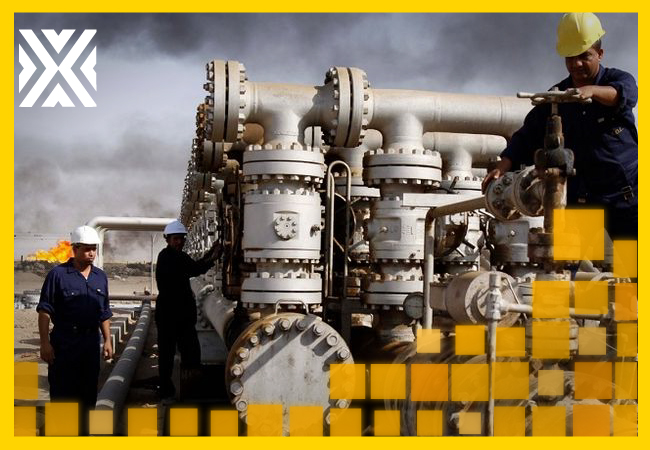Currency
September 23, 2018

Petroleum refineries are laden with various thermal and chemical hazards. Adequate personal protective equipment (PPE) is instrumental in providing a safe work environment for employees to complete the task at hand. When designing an effective flame-resistant (FR) PPE program for refinery workers, it is critical for safety managers to:
Know the multiple hazards at hand and their specific FR/AR requirements;
Understand the differences in protection among various FR fabrics;
Account for environmental factors;
Consider comfort and style.
The most prevalent risk at refineries is unexpected flash fire. With extensive vapors potentially present, refineries often require anyone on the property from fence line to fence line to wear FR apparel certified to NFPA 2112.
Beyond flash fire, refinery workers face additional thermal hazards. The risk of momentary arc flash is present for electricians who work on energized equipment, requiring FR clothing that provides the proper arc rating. Molten metal welding slag and spark hazards are a concern for welders working on iron pipes. The potential for primary chemical exposure in certain tasks may require chemical-specific PPE atop FR apparel. Even simply transporting chemicals can pose the danger for a minimal inadvertent chemical splash. Moreover, poor visibility poses hazards in busy, crowded work environments, increasing the need for FR high visibility garments.
OSHA regulation, 29CFR 1910.132, also known as the PPE regulation, requires proper hazard assessment and PPE selection with availability in workplaces where any thermal or chemical hazards or mechanical irritants are present. Due to the various hazards present in petroleum refineries, safety managers must select FR apparel with multi-hazard protection, and therefore, meet each respective consensus standard. For those exposed to flash fire and arc flash, both NFPA 2112 and NFPA 70E standards must be met. For low visibility work environments, FR garments should meet ANSI 107 requirements.

Certain fabrics, like branded cotton blends, work quadruple duty to protect against flash fire, arc flash, welding slag and low visibility hazards in a single FR garment. Multi-hazard protection fabrics reduce the need for certain task-based PPE, saving time between tasks and alleviating worry that employees are adequately protected. Workers facing primary chemical exposure may require additional layers of PPE, though recent advancements in technology have also brought new breathable fabric innovations to market that offer protection against both flash fire and inadvertent chemical splash in one garment.
With myriad FR fabrics available from a variety of manufacturers, it is important to recognize the significant distinctions in company background and textile performance. FR fabric manufacturers use different scientific methods to integrate protective properties into an FR garment—making brand reputation a key differentiator.
While FR qualities are not visible, safety managers can begin to verify FR performance with NFPA 2112 certification. However, all fabrics with less than 50 percent body burn can qualify for this particular certification. It is imperative to learn the actual body burn percentage at three seconds through the ASTM F1930 test to further analyze the quality of FR protection.
Moreover, not all garments designed to protect against flash fire will also protect against arc flash and molten metal welding hazards. Knowing the versatility of each fabric, such as branded cotton blends, is key to selecting the most effective and appropriate FR apparel.
Weather must also be considered when creating a multi-hazardous FR program. Oil refineries are often located in areas of extreme weather to which PPE must be suited. Light-weight, moisture-wicking fabrics are critical in the hot, humid environments of Houston and Louisiana, while warm yet breathable constructions are a must during Midwest winters.
Advancements in FR fabrics have allowed workers who face multiple thermal hazards to be at once protected, comfortable and even stylish on the job. Street fashion-inspired FR apparel, including stretch denim jeans and lightweight knits, now enables workers to go straight from work to dinner without the need to change clothes.
Traditional coveralls are being replaced with a variety of shirt and pant options, and employees are benefiting from the change. Workers can easily wear one set of versatile FR clothing for their day, allowing them to be more comfortable and productive through the various service provider programs.
By the very nature of the job, refinery employees require protection against a range of thermal and chemical hazards. Through educated fabric selection for everyday multi-hazard PPE, workers can complete the task at hand comfortably, stylishly, and most importantly, safely.
Know the multiple hazards at hand and their specific FR/AR requirements;
Understand the differences in protection among various FR fabrics;
Account for environmental factors;
Consider comfort and style.
Know the requirements
The most prevalent risk at refineries is unexpected flash fire. With extensive vapors potentially present, refineries often require anyone on the property from fence line to fence line to wear FR apparel certified to NFPA 2112.
Beyond flash fire, refinery workers face additional thermal hazards. The risk of momentary arc flash is present for electricians who work on energized equipment, requiring FR clothing that provides the proper arc rating. Molten metal welding slag and spark hazards are a concern for welders working on iron pipes. The potential for primary chemical exposure in certain tasks may require chemical-specific PPE atop FR apparel. Even simply transporting chemicals can pose the danger for a minimal inadvertent chemical splash. Moreover, poor visibility poses hazards in busy, crowded work environments, increasing the need for FR high visibility garments.
OSHA regulation, 29CFR 1910.132, also known as the PPE regulation, requires proper hazard assessment and PPE selection with availability in workplaces where any thermal or chemical hazards or mechanical irritants are present. Due to the various hazards present in petroleum refineries, safety managers must select FR apparel with multi-hazard protection, and therefore, meet each respective consensus standard. For those exposed to flash fire and arc flash, both NFPA 2112 and NFPA 70E standards must be met. For low visibility work environments, FR garments should meet ANSI 107 requirements.

Certain fabrics, like branded cotton blends, work quadruple duty to protect against flash fire, arc flash, welding slag and low visibility hazards in a single FR garment. Multi-hazard protection fabrics reduce the need for certain task-based PPE, saving time between tasks and alleviating worry that employees are adequately protected. Workers facing primary chemical exposure may require additional layers of PPE, though recent advancements in technology have also brought new breathable fabric innovations to market that offer protection against both flash fire and inadvertent chemical splash in one garment.
Differences in protection
With myriad FR fabrics available from a variety of manufacturers, it is important to recognize the significant distinctions in company background and textile performance. FR fabric manufacturers use different scientific methods to integrate protective properties into an FR garment—making brand reputation a key differentiator.
While FR qualities are not visible, safety managers can begin to verify FR performance with NFPA 2112 certification. However, all fabrics with less than 50 percent body burn can qualify for this particular certification. It is imperative to learn the actual body burn percentage at three seconds through the ASTM F1930 test to further analyze the quality of FR protection.
Moreover, not all garments designed to protect against flash fire will also protect against arc flash and molten metal welding hazards. Knowing the versatility of each fabric, such as branded cotton blends, is key to selecting the most effective and appropriate FR apparel.
Account for environmental factors
Weather must also be considered when creating a multi-hazardous FR program. Oil refineries are often located in areas of extreme weather to which PPE must be suited. Light-weight, moisture-wicking fabrics are critical in the hot, humid environments of Houston and Louisiana, while warm yet breathable constructions are a must during Midwest winters.
Consider comfort and style
Advancements in FR fabrics have allowed workers who face multiple thermal hazards to be at once protected, comfortable and even stylish on the job. Street fashion-inspired FR apparel, including stretch denim jeans and lightweight knits, now enables workers to go straight from work to dinner without the need to change clothes.
Traditional coveralls are being replaced with a variety of shirt and pant options, and employees are benefiting from the change. Workers can easily wear one set of versatile FR clothing for their day, allowing them to be more comfortable and productive through the various service provider programs.
By the very nature of the job, refinery employees require protection against a range of thermal and chemical hazards. Through educated fabric selection for everyday multi-hazard PPE, workers can complete the task at hand comfortably, stylishly, and most importantly, safely.









